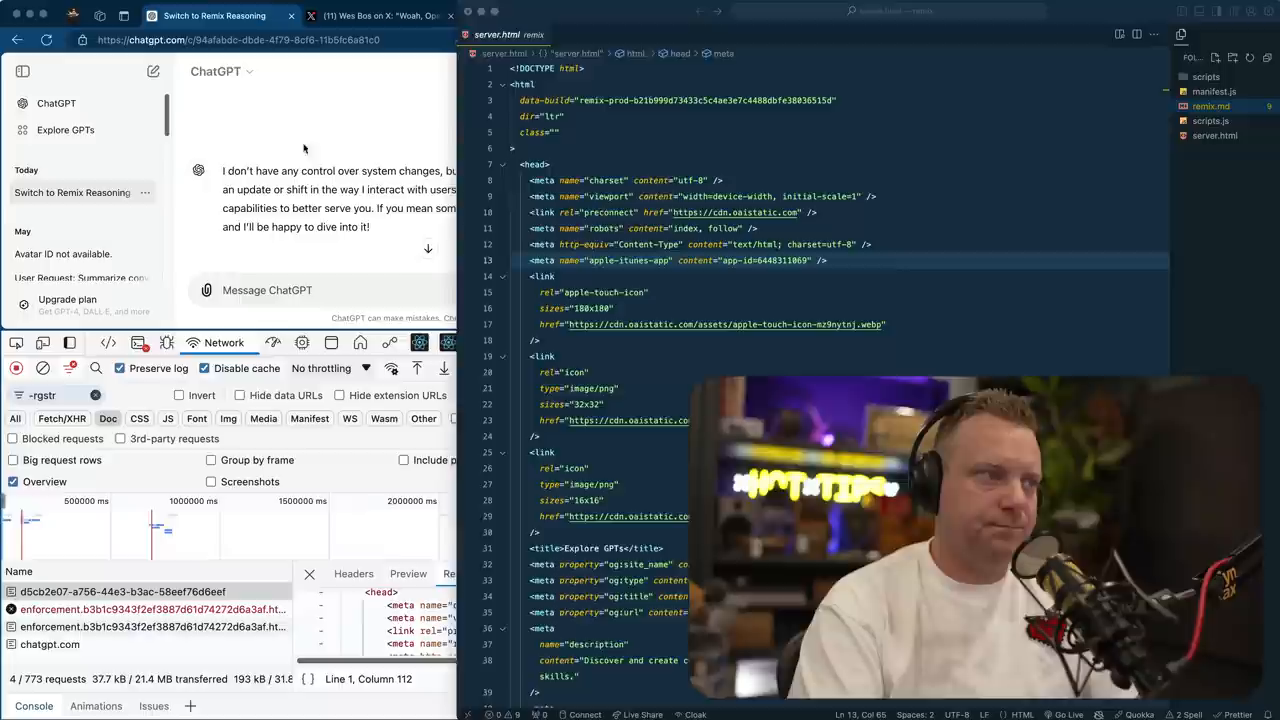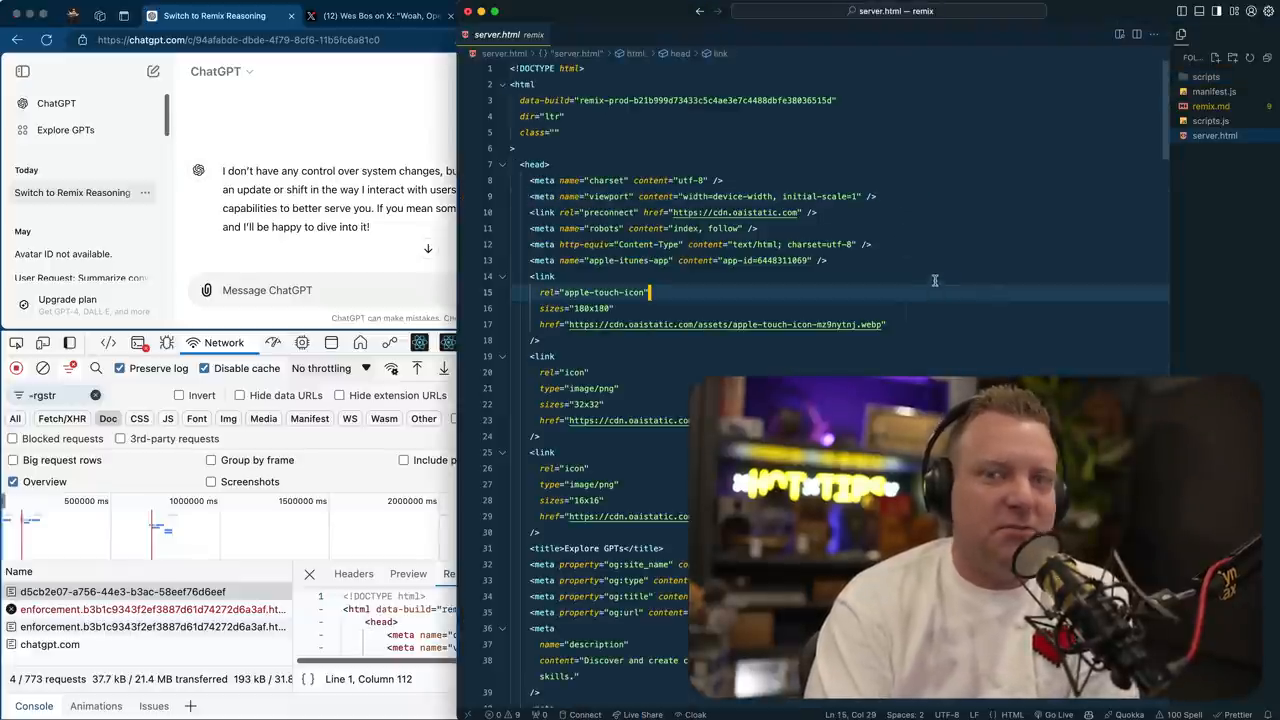ChatGPT's Switch to Remix: A Deep Dive
In a shocking move, ChatGPT has switched from Next.js to Remix, leaving many in the developer community wondering why. In this article, we'll dive into the reasons behind this decision and explore the benefits of Remix over Next.js.
A Look at the Application
The first thing we noticed was that the application is almost entirely client-rendered, with server-side rendering only happening for the initial render. This is different from Next.js, which is heavy on server-side rendering. Remix, on the other hand, is very good at doing client-side rendering, making it a more suitable choice for ChatGPT's use case.
Manifest Analysis
We also analyzed the manifest file and found that there are about 60 different routes, with many of them having loaders that provide data to the route when it's rendered. This is a key feature of Remix, allowing for efficient data loading and rendering.
Why Remix?
So why did ChatGPT choose to switch to Remix? We believe it's because of Remix's fantastic router, which allows for client-side rendering and easy data loading. Additionally, Remix runs on Vite, which is a lightweight and fast development server. This is in contrast to Next.js, which runs on Webpack and has a more complex development server.
Benefits of Remix
Remix's loader API is very good for collecting data for the initial render, and the ability to dump data into the document via the window.remix.content variable makes it easy to pick up on the client-side and render quickly. Additionally, Remix's flexibility and ease of use make it a great choice for applications like ChatGPT.

Conclusion
In conclusion, ChatGPT's switch to Remix is likely due to the benefits of Remix's client-side rendering, efficient data loading, and lightweight development server. While Next.js is still a great choice for many applications, Remix's flexibility and ease of use make it a better fit for ChatGPT's use case.




